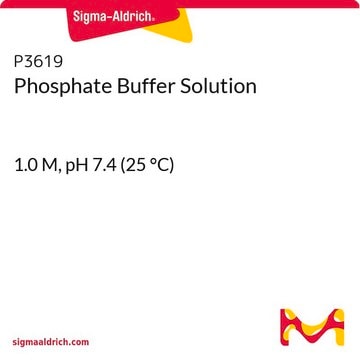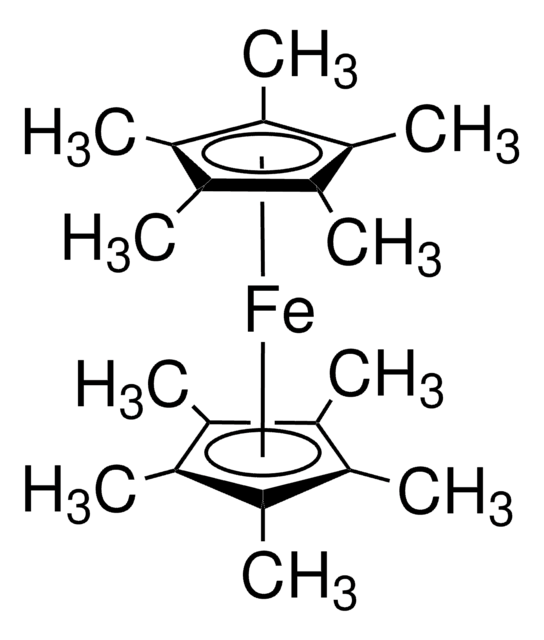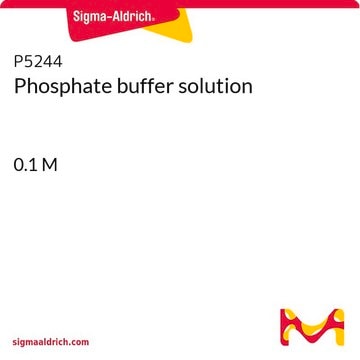All Photos(1)
About This Item
Empirical Formula (Hill Notation):
H18Cl3N6Ru
CAS Number:
Molecular Weight:
309.61
UNSPSC Code:
12352302
NACRES:
NA.22
Recommended Products
form
solid
Quality Level
storage temp.
2-8°C
InChI
1S/3ClH.6H3N.Ru/h3*1H;6*1H3;/q;;;;;;;;;+3/p-3
InChI key
GBDZMMXUOBAJMN-UHFFFAOYSA-K
General description
Hexaammineruthenium III/II (HexRu(III)|HexRu(II)) couple is a commonly used electrochemical redox couple due to its chemical and electrochemical reversibility.
Application
Hexaammineruthenium(III) chloride can be used to synthesize chloropentaammineruthenium(III) chloride.
ChemBeads are chemical coated glass beads. ChemBeads offer improved flowability and chemical uniformity perfect for automated solid dispensing and high-throughput experimentation. The method of creating ChemBeads uses no other chemicals or surfactants allowing the user to accurately dispense sub-milligram amounts of chemical.
Learn more about ChemBeads products
Product is also available as neat precatalyst 262005
ChemBeads are chemical coated glass beads. ChemBeads offer improved flowability and chemical uniformity perfect for automated solid dispensing and high-throughput experimentation. The method of creating ChemBeads uses no other chemicals or surfactants allowing the user to accurately dispense sub-milligram amounts of chemical.
Learn more about ChemBeads products
Product is also available as neat precatalyst 262005
Other Notes
High-Throughput Reaction Screening with Nanomoles of Solid Reagents Coated on Glass Beads
Versatile Methods to Dispense Sub-Milligram Quantities of Solids using Chemical Coated Beads for High-Throughput Experimentation
ChemBead Enabled High-Throughput Cross-Electrophile Coupling Reveals a New Complementary Ligand
Versatile Methods to Dispense Sub-Milligram Quantities of Solids using Chemical Coated Beads for High-Throughput Experimentation
ChemBead Enabled High-Throughput Cross-Electrophile Coupling Reveals a New Complementary Ligand
related product
Product No.
Description
Pricing
Signal Word
Danger
Hazard Statements
Precautionary Statements
Hazard Classifications
Carc. 1B Inhalation
Storage Class Code
6.1C - Combustible acute toxic Cat.3 / toxic compounds or compounds which causing chronic effects
WGK
WGK 3
Choose from one of the most recent versions:
Certificates of Analysis (COA)
Lot/Batch Number
Sorry, we don't have COAs for this product available online at this time.
If you need assistance, please contact Customer Support.
Already Own This Product?
Find documentation for the products that you have recently purchased in the Document Library.
Versatile Methods to Dispense Submilligram Quantities of Solids Using Chemical-Coated Beads for High-Throughput Experimentation
Martin, et al.
Organic Process Research & Development, 23, 1900?1907-1900?1907 (2019)
Wei Lu et al.
Biosensors & bioelectronics, 90, 258-263 (2016-12-05)
Rolling circle amplification (RCA) is an isothermal amplification technique with high efficiency and perfect accuracy for nucleic acids detection. However, RCA technique suffers the limitation to detect short DNA or RNA molecules. For long nucleic acid molecules, enzymatic restriction as
Misha Liu et al.
Analytical and bioanalytical chemistry, 409(29), 6821-6829 (2017-10-01)
Detection of DNA damage caused by ∙OH or radiation has led to rapidly growing interest in the fields of drug development, biochemistry, clinic diagnostics, and environmental evaluation. Electrochemical methods have been applied for DNA damage detection because of their fast
Rui Campos et al.
Langmuir : the ACS journal of surfaces and colloids, 34(29), 8472-8479 (2018-06-26)
Electrical properties of DNA critically depend on the way DNA molecules are integrated within the electronics, particularly on DNA-electrode immobilization strategies. Here, we show that the rate of electron transport in DNA duplexes spacer-free tethered to gold via the adenosine
A Erofeev et al.
Scientific reports, 8(1), 7462-7462 (2018-05-12)
Iron oxide nanoparticles have attracted a great deal of research interest and have been widely used in bioscience and clinical research including as contrast agents for magnetic resonance imaging, hyperthermia and magnetic field assisted radionuclide therapy. It is therefore important
Our team of scientists has experience in all areas of research including Life Science, Material Science, Chemical Synthesis, Chromatography, Analytical and many others.
Contact Technical Service









